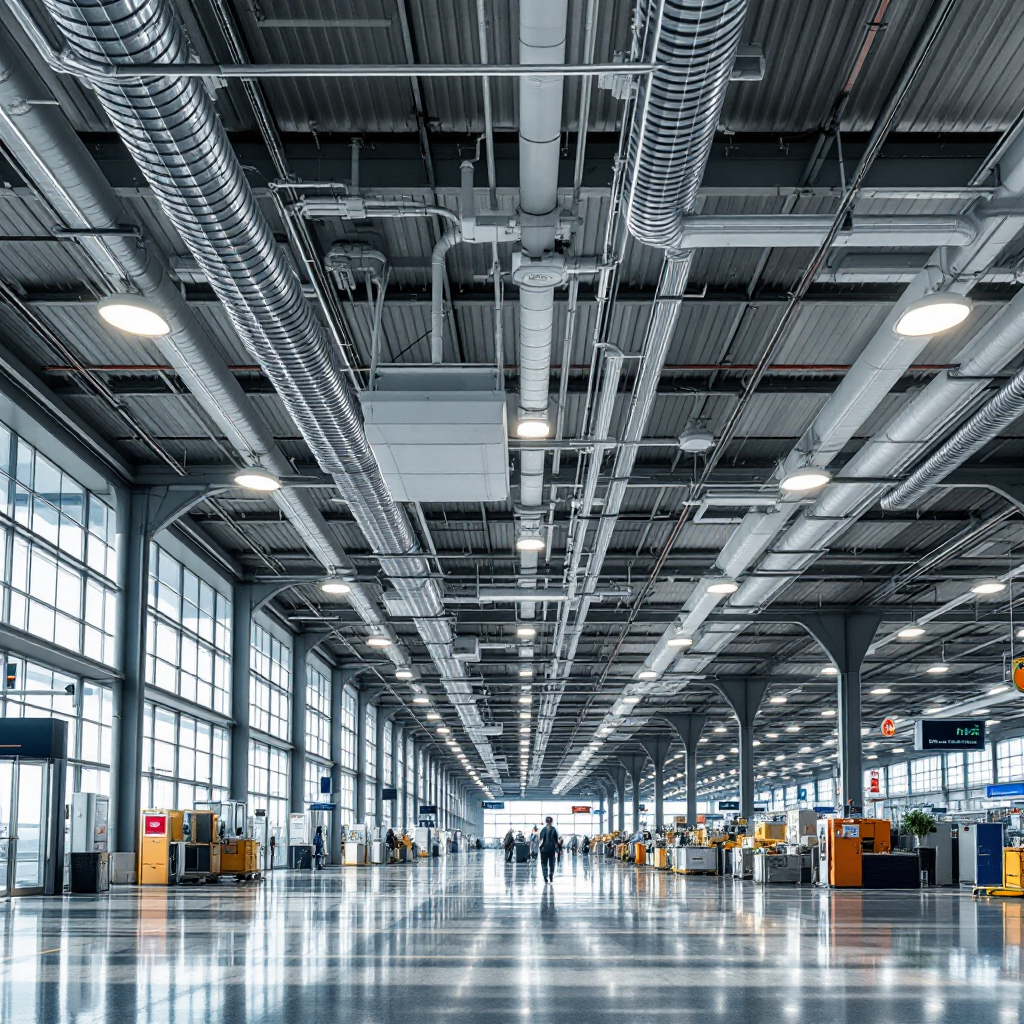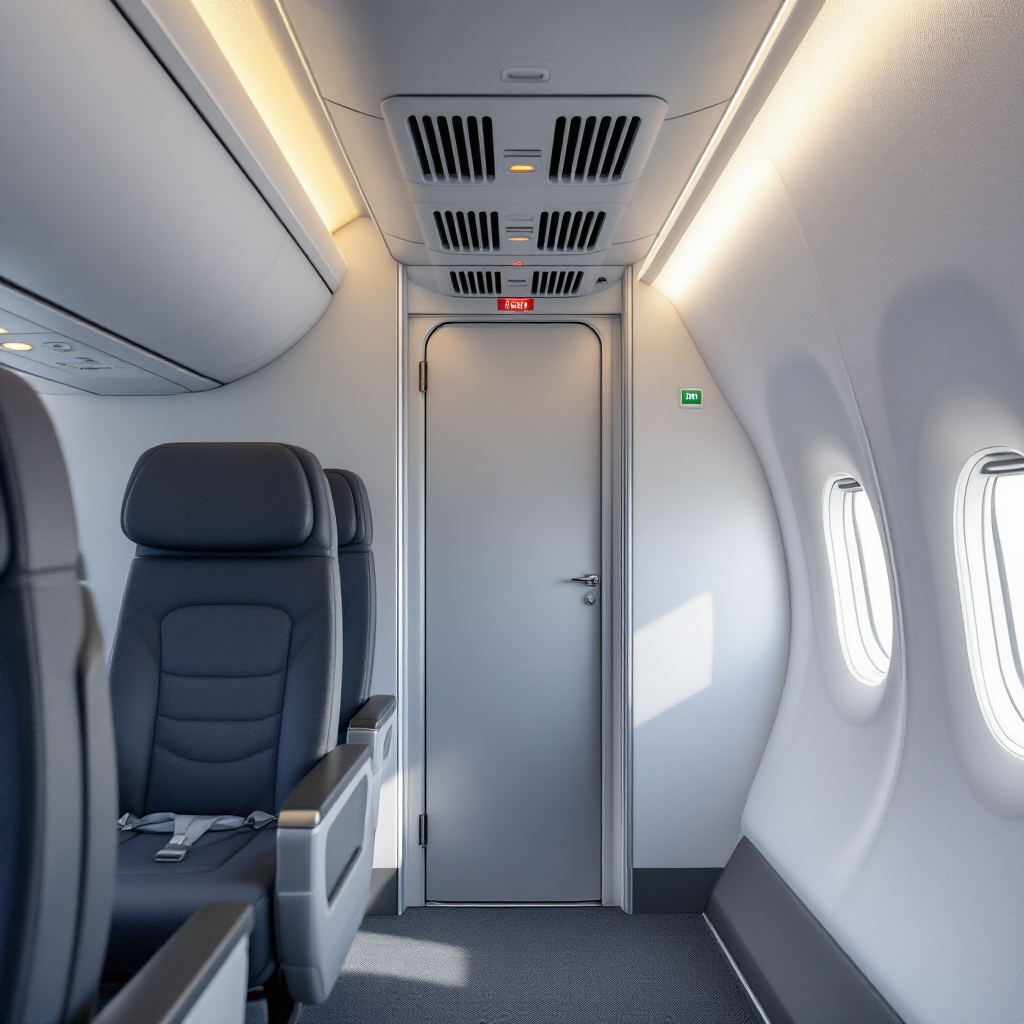Understanding smoke and fire hazards in airport
Airports concentrate people, equipment, and flammable materials in confined spaces. This mix raises the risk that a small ignition can escalate into a major event. Terminals house retail outlets, kitchens, baggage handling, and electrical rooms. Each area can create a different type of smoke and a different pattern of combustion. For example, a faulty conveyor motor emits hot particles and an acrid fume, while a lithium cell failure emits dense, toxic smoke with rapid ignition. Airport managers must plan for a wide set of hazards and for varying airflow that spreads contaminants quickly.
Early detection saves lives and assets. Airports that invest in rapid detection and control reduce evacuation times and limit damage. Aspirating and optical technologies help sense tiny particulates before visible smoke appears, so staff get a swift fire warning. The FAA-funded research on cargo systems shows how faster alerts shorten response windows and cut consequences in practical tests. For passenger areas, detection must avoid disruptive false alarms while still being sensitive. Good placement near electrical equipment and baggage handling improves coverage. Airport operators also follow regulations and standards that demand proof of system performance, design documentation, and regular testing. Those rules help maintain passenger safety and align systems with engineering goals.
Crew training matters. Ground crew, cabin crew, and flight crew must understand alarm signals and evacuation triggers. Team drills test coordination with firefighting teams and with building control systems. Finally, performance-based approaches using modelling and verification demonstrate that systems are designed to keep evacuation routes tenable. Those models guide decisions about ventilation and zone control to limit the spread of smoke.
Advanced smoke detection and detector system technologies
Aspiring technologies changed how airports detect smoke. Aspirating smoke detector networks pull air through sampling pipes to a central sensing unit. They spot particles at extremely low levels. For instance, aspirating devices can identify concentrations as low as 0.005% obscuration per meter, allowing detection well before flames form (Xtralis data). In many terminals and hangars, that sensitivity shortens the interval between ignition and alarm, and it helps avoid major disruptions.
System integration matters. Modern detection system platforms link smoke alarms to the building management system, to CCTV, and to operational dashboards. For airports that want to convert cameras into operational sensors, Visionplatform.ai can stream events and improve situational awareness by linking visual cues to alarm data. This reduces false positives and gives security teams faster context. Also, integration enables automatic responses such as staged announcements, controlled ventilation, and door releases.

Response time is critical. Advanced systems can detect a developing event within seconds. One supplier cites detection within 8 seconds in test conditions, significantly quicker than conventional alarms that may take much longer (supplier test data). That faster timeline enables a faster and more measured operational response, which reduces needless evacuations while protecting people and assets. Designers also combine aspirating networks with optical smoke and heat detection to balance sensitivity and robustness across large volumes and varied ventilation paths.
AI vision within minutes?
With our no-code platform you can just focus on your data, we’ll do the rest
Fire detection and sensor integration in cargo compartment
Cargo compartments present special risks. Packed pallets, batteries, and hazardous goods create potential for rapid escalation. Lithium batteries are a major concern because a thermal runaway can produce intense heat and dense smoke quickly. For transport aircraft, early detection in a cargo bay can be the difference between controlled containment and an in-flight emergency. FAA-funded research stresses that advanced early fire detection in aircraft cargo delivers earlier warnings under many scenarios (FAA research).
Multi-Analyte Chemical Detection (MACD) systems and RFID heat sensors are among the options tested for these compartments. Tests show that combining chemical signatures with localized heat sensing gives faster, more reliable alerts than a lone smoke detector. These hybrid configurations can detect gases and thermal changes that precede visible combustion, and they can localize the event inside a specific compartment. In trials, such systems outperformed traditional systems in detection speed and in the ability to detect fires despite ventilation and shipment packing.
Designers add dedicated smoke lines and detector system routing that isolate each cargo zone. That design reduces the chance that a distant event will trigger alarms across the whole aircraft. Still, teams must set clear procedures for a case of a fire in cargo: notification, suppression if available, diversion decisions, and coordination with ground firefighting. Ground-handling teams use those protocols during transfer and storage. To read about how visual sensors support personnel tracking in busy airport spaces, see the people detection case studies on Visionplatform.ai for context and operational alignment.
Airport fire prevention strategies and fire extinguishers
Prevention reduces probability of ignition. Airports use screening, storage rules, and segregation to limit hazardous goods and flammable waste. For example, battery screening protocols reduce the risk that baggage or cargo contains undeclared hazardous cells. Performance-based design complements those policies. Engineers run Computational Fluid Dynamics (CFD) to predict smoke movement and to size mechanical extraction systems. CFD modelling guides where to place ducts, vents, and smoke control fans so the evacuation routes remain tenable during an event (CFD evaluation).
Hand-held fire extinguishers remain essential. Fire extinguishers of appropriate class and capacity must sit in high-risk zones such as server rooms, kitchens, and maintenance hangars. Staff training emphasizes correct use; an incorrect extinguisher can worsen a situation. For larger risks, fixed extinguishers and automatic suppression systems supplement manual devices. Airports maintain policies for extinguisher deployment and for scheduled inspection of devices and agents used.
Teams coordinate prevention plans with emergency drills. Drills test communications among security, operations, and firefighting, and they validate activation criteria and suppression deployment. Also, airport teams use video analytics to monitor crowd movement and to inform evacuation flows; those surveillance-driven metrics help refine zone assignments and ensure that evacuation plans reflect real occupancy patterns. For practical integration examples, the Visionplatform.ai platform shows how camera events can drive operational dashboards that support drills and refine response timelines.
AI vision within minutes?
With our no-code platform you can just focus on your data, we’ll do the rest
Detecting fire and smoke in cabin and lavatory environments
Cabin and lavatory areas need discreet, reliable detection. Smoke in a passenger cabin spreads fast and can contaminate bleed air systems. Cabin air quality monitoring and gas detection provide early warnings of toxic or combustible gases before visible smoke reaches detectors. San Francisco International Airport and industry groups have demonstrated the value of gas sensors in aviation environments (case study). Those sensors complement smoke alarms and add another layer of safety for the passenger cabin.

Lavatory fires remain a frequent localized risk because of discarded lithium cells or careless cigarette-like items. Operators use small, dedicated smoke and heat sensors in lavatory waste bins and ceilings to avoid a larger event. These sensors help detect smoke quickly while reducing false alarms from normal passenger activity. Cabin crew train to respond to a lavatory alarm with targeted checks and to use portable extinguishers if safe. The design goal is to detect smoke or fire early and to prevent escalation into a broader contamination or evacuation event.
Systems are designed to detect small changes in air chemistry and particulate levels in the passenger cabin. When a detect smoke event occurs, the flight crew follows checklisted actions, and the flight deck receives an immediate alert. For robust management, airports and carriers coordinate on procedures for diversion and for ground firefighting readiness. That coordination preserves passenger safety and reduces unnecessary flight disruptions.
Automated extinguishing system and discharge protocols
Automated extinguishing systems play a central role in airports. Designers choose among foam, water mist, and gas-based agents depending on the hazard and the accepted residue profile. Water mist provides quick cooling with limited contamination, while clean agents avoid residue but require careful ventilation after discharge. The agent used must match the asset and risk profile. For example, server rooms and some repair zones accept clean agents that do not damage electronics.
Systems can activate automatically when linked sensor thresholds cross defined triggers. Heat detection zones provide confirmation to limit false discharges. Optical smoke inputs and photoelectric sensing add verification layers. Designers set activation logic to require two corroborating signals where possible. That reduces accidental discharge while keeping responses swift. When an extinguishing system discharges, ventilation and recovery plans go into effect to remove residue and to restore operations safely.
Maintenance is essential. Regular inspection and testing guarantee that suppression lines, valves, and discharge nozzles work as intended. Airports maintain service logs to record activation and discharge events and to track whether an existing fire required suppression. Training for ground firefighting teams includes familiarisation with system deployment, safe entry after discharge, and residue cleanup. Finally, automated solutions integrate with operational analytics and with on-prem video analytics like Visionplatform.ai to provide a clear event timeline and to reduce the time teams spend verifying alarms.
FAQ
What are the most common causes of smoke in an airport?
Common causes include electrical faults, overheating baggage equipment, and kitchen incidents. Human error and defective appliances also contribute to ignition.
How fast can modern systems detect smoke?
Advanced aspirating networks can detect particles within seconds under test conditions. One supplier reports detection within 8 seconds in transit hubs (test data).
Are cargo compartments a special risk?
Yes, cargo compartments contain varied goods and packed shipments that can mask early signs. Lithium batteries and hazardous items increase the chance of rapid thermal events.
What is MACD and how does it help?
MACD stands for Multi-Analyte Chemical Detection and it senses chemical indicators that precede ignition. When paired with RFID heat sensors it improves early warning in a transport aircraft cargo bay (FAA study).
Where should fire extinguishers be placed in an airport?
Extinguishers must sit in high-risk zones such as kitchens, server rooms, and hangars. They should match the local hazard class and receive regular inspection.
How do lavatory detectors reduce false alarms?
Dedicated detectors in lavatory waste areas use tuned thresholds and combined heat sensing to avoid nuisance trips. This lets crew focus on real incidents quickly.
Can cameras help with smoke and fire responses?
Yes, video analytics provide context to alarms and track evacuation movement. Platforms like Visionplatform.ai convert existing CCTV into operational sensors so teams act faster and reduce false positives.
Do automatic systems discharge without human input?
They can, if activation logic and sensor thresholds meet set criteria. Designers often require multiple triggers to prevent accidental deployment.
What should flight crew do on a smoke warning?
Flight crew follow standard checklists to isolate the source and to inform the flight deck. If smoke persists, they coordinate diversion and prepare ground services for firefighting.
How do airports test detection performance?
Airports use lab data, CFD modelling, and full-scale trials to verify coverage and response. Those exercises ensure systems are capable of detecting developing hazards and that evacuation routes remain tenable.


